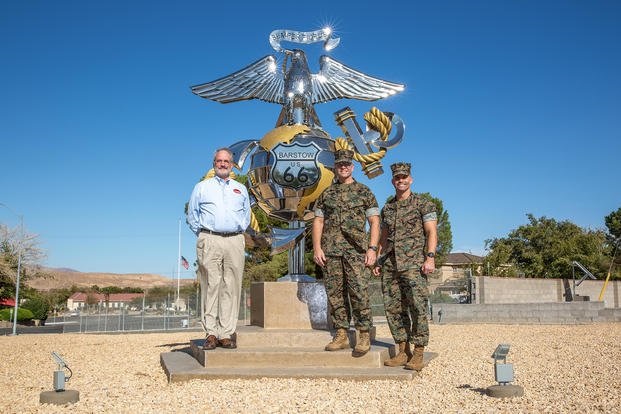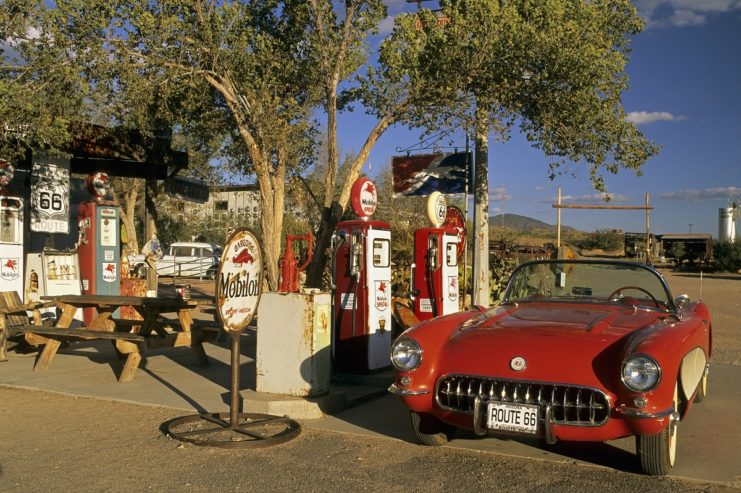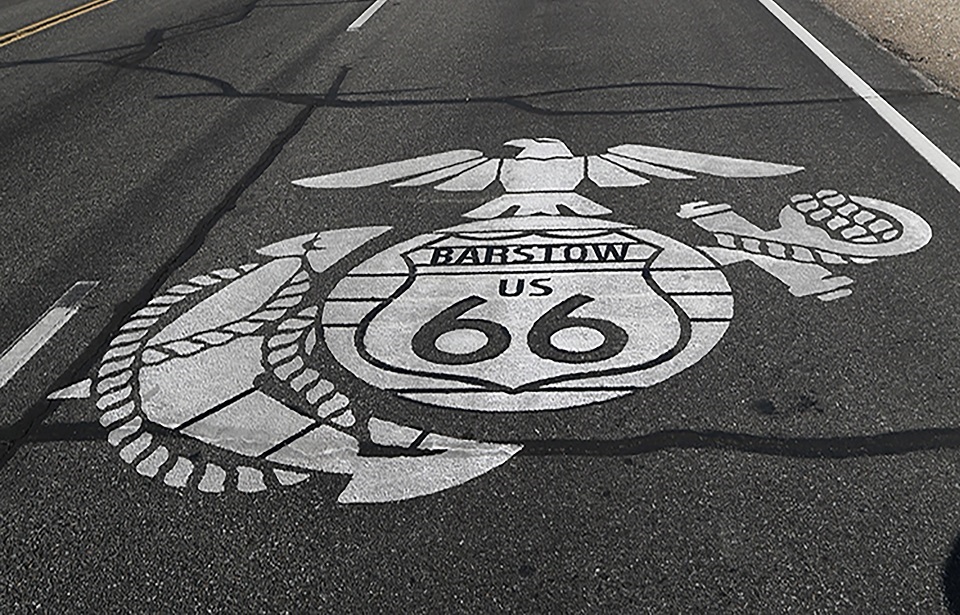The 2,500 miles long Route 66 is one of the most famous stretches of road in the world and has become a symbol of American culture. The road was once a busy highway for American’s crossing the country and it supported many businesses and communities along its length. The Marine Corps owns a section of the road and placed a specially-designed Eagle, Globe, and Anchor monument for it.
This unique symbol has a conventional highway shield placed on the globe part of the Corps’ emblem. It can be seen on roadsides along Joseph L. Boll Avenue, an old part of Route 66 that quite literally runs through Marine Corps Logistics Base Barstow.
The purpose of the symbol is to honor the base’s intimate and long-lasting relationship with the iconic road. Logistics Base Barstow’s environmental director Jason Thompson said it “has the privilege of being the only military base that has Route 66 running straight through it.”
Since 1964 this section of road has been off-limits to the public, who now use the newer Interstate 40 system. Despite this, officials interested in history implemented the Corps’ emblem in 2019 to recognize the road’s cultural significance.
“The biggest drawback is that the only way you can see the statue is if you have permission to access the base,” Thompson said. “You won’t see it anywhere else.”
The large emblem is constructed from steel and brass, but an identical version can be found painted on the pavement.

After being designed, the symbol was presented to the California Historic Route 66 Association, which approved it unanimously. It was then trademarked by Headquarters Marine Corps so it can only be used at this location.
Outside of the roadway, the base manages other culturally important items in the area, like Native American rock carvings.
Route 66’s importance

Most pieces of road are little more than a practical tool to travel on, but Route 66 is enormously important historically and culturally. Although parts of the actual roadway had existed long before, the officially recognized birthdate of Route 66 is April 30, 1926. It was the first all-weather highway from Los Angeles to Chicago – spanning 2,450 miles across eight states and three time zones.
Today it is symbolic of America’s prosperous post-war years, with cafes, gas stations, and attractions dotted along the road. It was so busy that it supported entire communities who made a living from the many travelers using the road.
However, it was also heavily used by the military throughout WWII. The huge mobilization effort for the war saw the road become a transcontinental artery for equipment, troops and supplies.
Marine Corps Logistics Base Barstow was originally built to be out of range of Japanese naval guns that could have shown up on American shores. The Corps’ supply depot was originally located in San Francisco, but the Navy moved it into the desert in 1942. It was crucial for supplying the fighting in the Pacific.
The base grew continuously to support the war effort and was expanded by 2,000 acres in 1946, which was purchased from the Army. Today, the base contains the US military’s biggest rail facility, which is used by other nearby installations like Fort Irwin. It repairs and rebuilds combat and support equipment for Marine ground forces.
A number of songs released during the United States’ “golden years” were based on the road, which helped cement its cultural significance. One of the most well-known of these, (Get Your Kicks on) Route 66, was written by Bobby Troup in 1946. Troup had served in the Marines during the war, further linking the Corps with the historic road.
Although the stretch of Route 66 that passes through the base is closed to the public, drivers are able to travel along it with permission from the base. Historical information on the base and the road it was built alongside is available at the base’s entrances.
